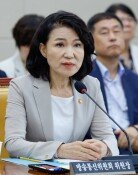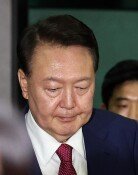Less Worries of Unpaid Retirement Allowances
Less Worries of Unpaid Retirement Allowances
Posted August. 23, 2004 22:12,
Main Contents
If the retirement pension bill passes in the National Assembly, existing companies of five or more employees can choose either the current retirement pay system or the newly adopted retirement pension system (Defined Benefit Plan or Defined Contribution Plan) starting in 2006 with an agreement between employers and workers.
However, it will be mandatory to choose a retirement pension system for new businesses established after the law takes effect in 2006 and for existing businesses of four or less employees currently without a retirement pay system.
The law also stipulates that businesses of four or less employees will adopt the pension system after 2008 on a timeline under a presidential decree with a gradual increase in the business owners share in the payment, considering their burden.
Qualifying persons for the pension benefits are those under national pension benefits (65 years old after 2033) and retired employees who are 55 years old or older that have joined the plan for more than 10 years considering corporations regulations in age limit.
If one has not worked at a place for 10 years in total, he or she receives the pension in a lump sum payment. The pension benefits can be received in a one time payment or in installments in more than five years.
There are only two methods of reserve fund management: a trust agreement in which a company sets its employee as a beneficiary, and an insurance agreement in which a company sets its employee as insured.
The governmental policy stipulates that the reserve fund paid by the company be managed by a financial organization decided by mutual discussion between the administration and the union, and that the organization has to meet a financial soundness requirement and other specific requirements in order to secure profitability and stability.
Also, even if an employee leaves his or her company and starts at another one, they can calculate the total amount after accumulating their retirement lump sum allowances and make use of the amount after retirement under the newly devised Individual Retirement Accounts Plan.
In addition, an employee can withdraw money midway when he or she needs a large sum of money, such as becoming unemployed for a while or purchasing a house under the Defined Contribution Plan.
Policy Background and Its Expected Merits and Shortcomings
The retirement pension system secures retirement allowances to be paid to workers, even in the case of a companys bankruptcy, as it requires companies to trust the money to financial organizations.
On the other hand, the Defined Contribution Plan can result in a smaller amount of retirement pension than receiving a lump sum allowance if the financial organization does not manage the fund well.
Also, from the employers point of view, it might give the company a hard time if it has problems in capital flow since it has to pay the pension reserve money to the financial organization every month. Under the current retirement pay system, they do not have to pay unless an employee quits.
The Ministry of Labor explained that the retirement pension system needs to be adopted because workers rights of receiving the retirement allowance are not secured in case companies go bankrupt since they are reserving the retirement money only in their books.
It added that, because the current retirement pay system only applies to employees who have worked at a company of five or more employees for more than a year, 52 percent of the total number of workers are not receiving the benefits, and that it has decided to extend the retirement benefits to all workers.
Jong-Hoon Lee taylor55@donga.com





![[속보]트럼프 “한국, 자국 방위비 부담해야”](https://dimg.donga.com/c/138/175/90/1/wps/NEWS/IMAGE/2025/07/09/131965217.1.jpg)

